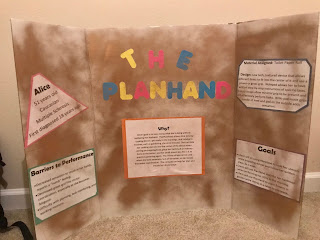Home Health Occupational Therapy
Mandy Chamberlain begins her discussion about home health with Monika Lukasiewicz by hearing how Monika was first exposed to OT through a personality test and how she loved that OT is both a science and an art. She loves the creativity of home health OT and it has allowed her to practice in the ways that she wants to because she gets to be in people's environments and really maximize her skills. For example, when assisting a client with her independents shower skills, she said it is very beneficial to see her actual shower setting and make modifications based off of her individual needs in that shower. She thinks where home health shines is that they get to see the big functional picture for people while being in their environment and getting a special look at safety i.e. fall prevention, how are they taking their meds, performing ADLs. Monika described a typical day as an OT in home health as most mornings she goes to the office to make phone calls and/or following up on something going on in a house and visiting between 3-6 clients a day in one-hour increments depending on caseload and drive distance. Monika describes the concerns she once had and still has sometimes about going into someone's home. She thinks you have to have some level of confidence, adaptable to change (flexibility) and managing time, and be a person who is accepting of who people are, slow to judge but also being able to make challenging decisions such as considering your safety in an environment. Monika recommended not working in home health if you do not enjoy being around the clients families because they are almost always present or in contact with you.
I found it very interesting how they discussed that being client-centered can be a conflicting area of interest especially in the aspects of personal and professional opinions. When working with your client, you can't make goals for them, you have to base your care off of their own goals and always be ready to give your professional opinion/recommendations and set aside your own personal ones.
Another informing thing to me was how they both discussed how using therapeutic use of self and building rapport with clients are two of the most important skills in being an OT. They explained how once you build rapport, you can have more real, yet still professional, conversations with your clients and they trust your advice. In the latter half of the segment, they began their discussion about making equipment recommendations with assistive aids in the client's setting while considering cost, accessibility, and specific needs and giving the recommendations to the client or caregiver. Similar to the common myths covered in the AT Prezi, when a client is concerned with cost she said they may make their assistive aid (a low tech device) rather than buying and implementing that into their daily routine. I enjoyed the TED talk about the idea of universal design in the world where no matter where you are, how you communicate, or how you interpret information, you can find easily accessible tools. The universal design applies to all people without singling out any disabilities and be beneficial to all. I found a correlation with this universal design and the benefits to it in home health assistive technology in that an OT never knows if someone is available to install the aid, if the aid is as accessible for one client compared to another, if a client has a caregiver to assist, etc. With so many different possibilities for each case an OT is involved in, I now wonder if there isn't an easier way to make care more universal in the world of AT. Maybe these are concerns that need to be straightened out with insurance companies or government agencies.
I found it very interesting how they discussed that being client-centered can be a conflicting area of interest especially in the aspects of personal and professional opinions. When working with your client, you can't make goals for them, you have to base your care off of their own goals and always be ready to give your professional opinion/recommendations and set aside your own personal ones.
Another informing thing to me was how they both discussed how using therapeutic use of self and building rapport with clients are two of the most important skills in being an OT. They explained how once you build rapport, you can have more real, yet still professional, conversations with your clients and they trust your advice. In the latter half of the segment, they began their discussion about making equipment recommendations with assistive aids in the client's setting while considering cost, accessibility, and specific needs and giving the recommendations to the client or caregiver. Similar to the common myths covered in the AT Prezi, when a client is concerned with cost she said they may make their assistive aid (a low tech device) rather than buying and implementing that into their daily routine. I enjoyed the TED talk about the idea of universal design in the world where no matter where you are, how you communicate, or how you interpret information, you can find easily accessible tools. The universal design applies to all people without singling out any disabilities and be beneficial to all. I found a correlation with this universal design and the benefits to it in home health assistive technology in that an OT never knows if someone is available to install the aid, if the aid is as accessible for one client compared to another, if a client has a caregiver to assist, etc. With so many different possibilities for each case an OT is involved in, I now wonder if there isn't an easier way to make care more universal in the world of AT. Maybe these are concerns that need to be straightened out with insurance companies or government agencies.


Comments
Post a Comment